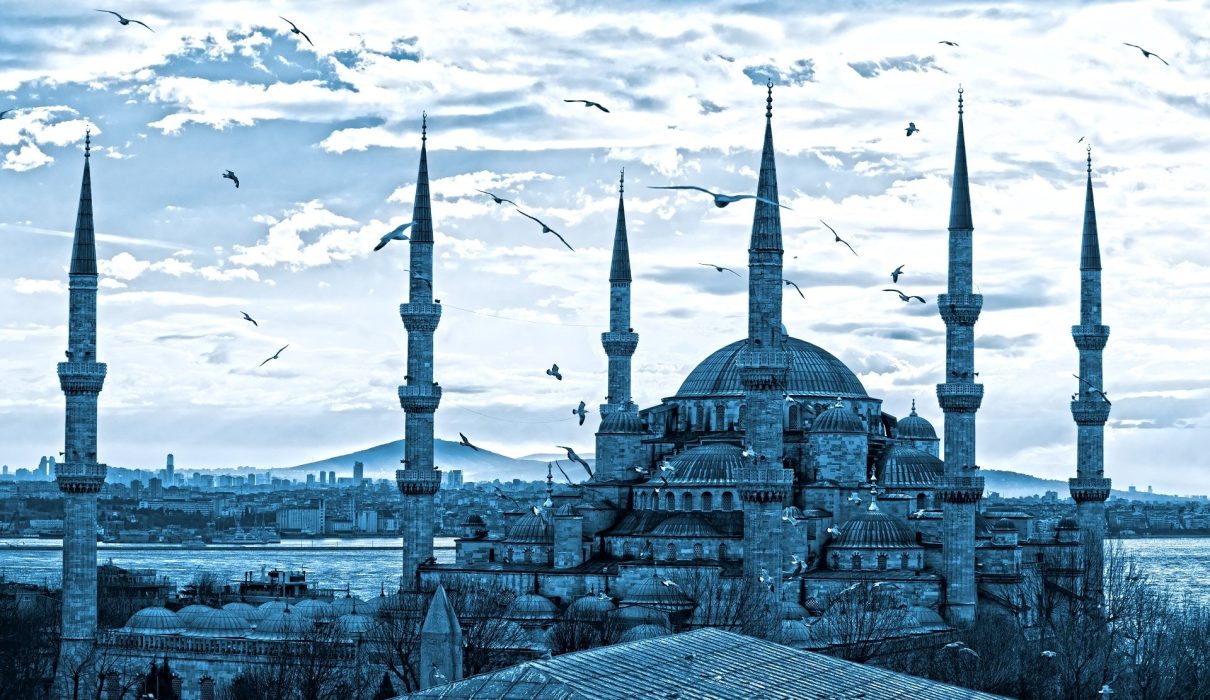Introduction
Built in the early 17th century under Sultan Ahmed I’s patronage, the Blue Mosque symbolizes the Ottoman Empire’s grandeur and religious devotion. It was constructed to rival Hagia Sophia in splendor and remains a timeless icon in Istanbul’s skyline.
Architecture and Design
The Blue Mosque mesmerizes visitors with its intricate architecture, featuring cascading domes, six minarets, and over 20,000 hand-painted blue tiles that adorn the interior walls. The expansive courtyard, ablution fountains, and intricate calligraphy further highlight the mosque’s aesthetic and spiritual significance.
Location and Directions
Situated in Istanbul’s Sultanahmet district, the Blue Mosque’s central location makes it easily accessible by tram, bus, or on foot from major landmarks like the Hagia Sophia and Topkapi Palace. Visitors can enjoy panoramic views of the mosque from surrounding parks and cafes, offering a glimpse into its majestic beauty.
Visiting the Blue Mosque
Inside, the main prayer hall impresses with its spacious layout and intricate decoration, showcasing the mastery of Ottoman craftsmanship. Tourists can admire the beautiful stained glass windows, intricate carpets, and the central prayer niche (mihrab), which directs worshippers towards Mecca during prayer.
Tourist Tips
Beyond its architectural splendor, the Blue Mosque holds profound cultural and religious significance for Muslims worldwide. It remains an active place of worship, hosting daily prayers and special religious ceremonies that reflect Istanbul’s vibrant Islamic heritage.

